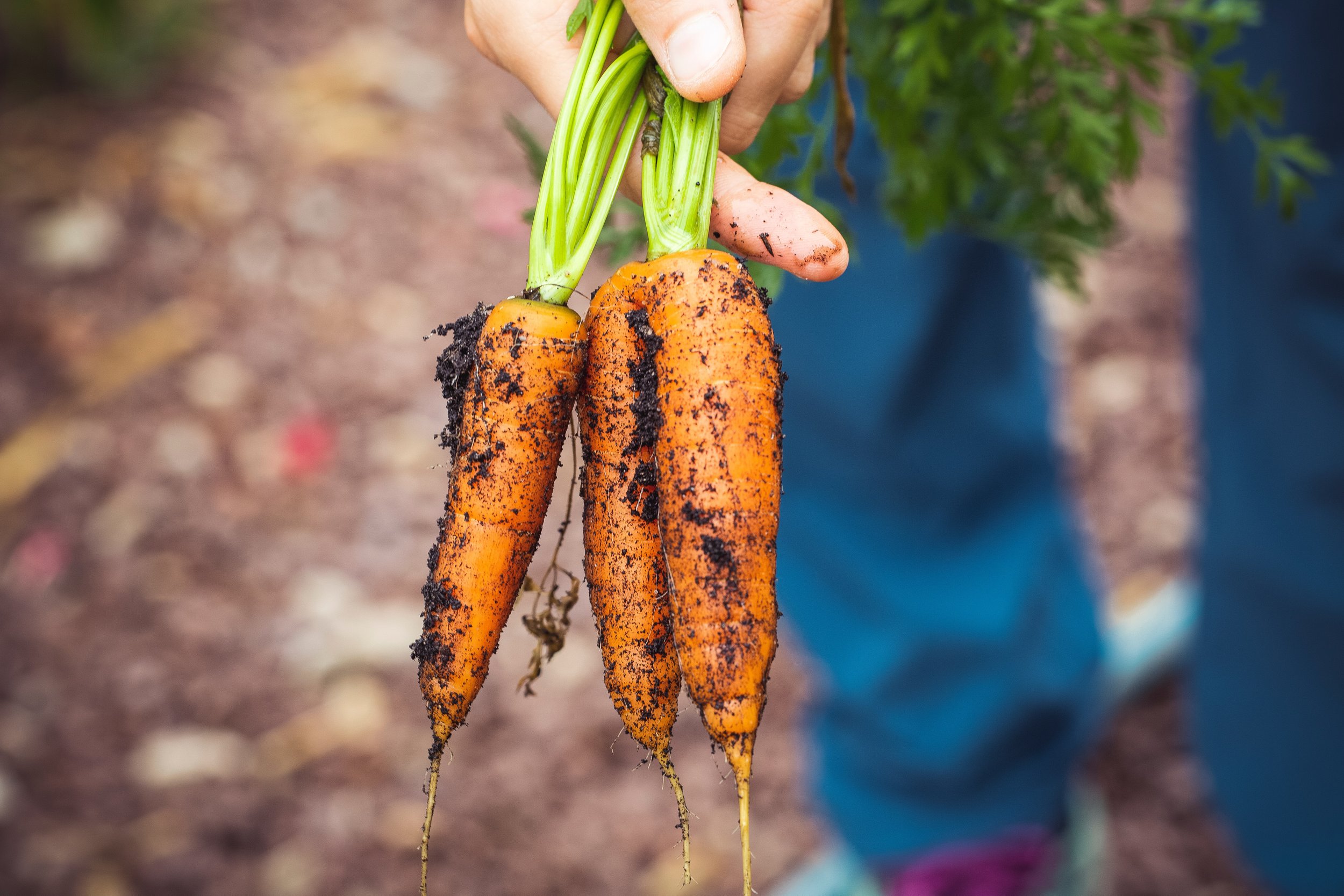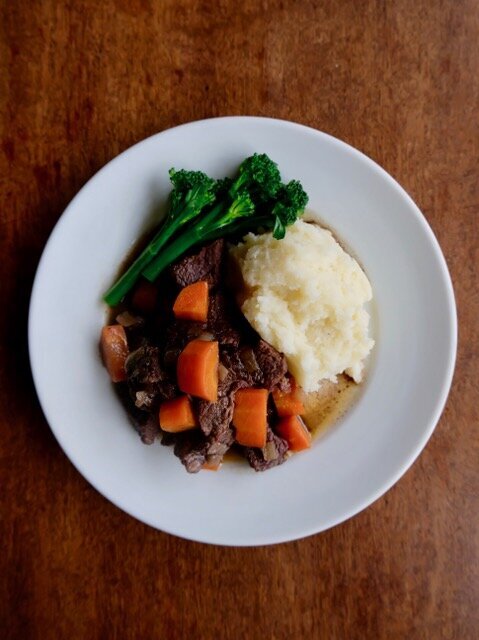Tom Hunt On Sustainable Food Systems
Image: cHARLIE bUDDOur food is lacking the nutrients it once had. Shockingly, many scientists estimate that we have just one hundred harvests left until we’ve completely depleted all the topsoil nutrients needed to grow and produce food. We need to move to regenerative farming in order to achieve a sustainable food system.
Tom Hunt, eco chef, author, restaurant founder, Guardian food columnist and food systems activist, believes the reason we’re destroying our planet is because people have lost their connection with nature. His new book, Eating for Pleasure, People and the Planet shows how through small, conscious changes we can benefit the environment locally and globally.
Interview by Jimmy SandisonSome Good Ideas: Hi Tom, congratulations on your new cookbook, Eating for Pleasure, People and the Planet, it is fantastic. First of all, can you explain what a sustainable food system is?
Tom Hunt: That’s a huge question, which I feel the UN answer very well… their definition (which I also include in my book) is that a sustainable food system is one that has a low environmental impact, one which contributes to the healthy life of present and future generations and which is protecting and respecting of biodiversity and ecosystems. It is culturally acceptable -which is a really important point- and offers reliable access to affordable and nutritious food.
I based the sustainability manifesto of Eating for Pleasure, People and the Planet on the UN’s definition of a sustainable diet. But also, on the incredible academic work that has been done over the past ten years by people like Professor Tim Lang and Doctor Pamela Mason, who wrote Sustainable Diets. Pamela Mason was the researcher for Eating for Pleasure, People and the Planet. Although I am well read on the subject, and I do feel that knowledge of sustainable diets is intuitive and is much about common sense, I wanted to back up my writing with Pamela Mason’s PHD in Nutrition and MSc in Food Policy. I wanted to fact-check my work and give it the credibility it needs. Although I feel more and more like an academic in the research I do, into environmental climate change, agriculture and our food systems, I am first and foremost a chef.
“A sustainable diet, simply put, is one that helps people and the planet.”
Tom HuntCultural acceptability and accessibility are things that aren’t always considered when people talk about a sustainable diet. Often, we are told we should buy organic or biodynamically grown produce, but they’re not necessarily the answer. This is where agroecology comes in. Agroecology is farming that considers its surrounding ecology, farming in harmony with nature as opposed to against it. Conventional farming is a Westernised approach to farming that treats the soil like a medium for holding nutrients that can be analysed and adjusted, whereas agroecological farming (and organic farming to an extent) is really about soil regeneration and supporting the complex biodiversity of nature, above and below ground.
Image: Charlie BuddSGI: Why is eating for pleasure an important aspect in creating a sustainable food system?
TH: I’m a Slow Food advocate and avid supporter of Carlo Petrini, the founder of Slow Food, which is the largest NGO in the world. The organisation started in the 1980s as a kind of rebellion against fast food, in support of cultural and biological diversity and traditional, local and resilient food systems. One of their core messages, which -as a chef- is something particularly important to me and is within my own sustainability manifesto, is that we should eat for pleasure. Really, a sustainable diet has to taste good, because otherwise, how can it be sustainable? We are treating food as fuel, which is a big mistake. Food isn’t fuel. Food is us and our planet and is essentially nature, which we need to reconnect with in order to… well… have a fulfilling life. A sustainable diet is also necessary to sustain harmony on our planet and really support nature.
SGI: You often talk about taking a holistic approach to food, what do you mean by this?
TH: I get a little bit frustrated when chefs and cookbooks are touting different diets that are supposedly sustainable because they are simply vegan or zero-waste. Or with chefs who call themselves holistic chefs, who come from the wellbeing movement, but who really don’t consider or make proper use of that word. This is because for me, holistic is a really important word: when think about the word in any depth, you realise that everything is totally connected, and our food system is certainly no exception. Really any diet should be looked at holistically, and should take into consideration health and the ecological and sociological impacts of our food.
“There is great value in supporting a local farmer who is practicing good ecological agricultural farming methods, because you’re supporting a family rather than a corporation, and every customer really does matter for a small family business.”
Tom Hunt SGI: How do our food choices impact others around the world?
TH: I know I just mentioned it, and it may sound corny, but everything is connected. That is the idea behind a holistic diet. It’s not just a notion, it’s a fact, that all our actions have ripple effects which can affect people and the planet, whether that is globally or locally. A really interesting example is in the Gulf of Mexico. There are large-scale industrial farms many miles away from the Gulf coast, but the run-off from these farms have created humongous dead zones of pollution in the Gulf, and have had a huge detrimental knock-on effect on the wider environment and eco-systems. Another example is that when we buy an avocado from a supermarket, we collectively contribute to the increase in price of avocados locally where they are grown, in Mexico and Kenya, making them unaffordable for the local people. It’s increasing poverty and lowering the nutritional content of people’s diets in those areas.
On a positive note, buying ingredients from a local, regenerative farmer supports the microsystem around that farm. People can become apathetic because they think their single actions are unimportant, because they seem so minute in terms of the bigger picture. But there are several reasons why that is not true. There is great value in supporting a local farmer, or a farmer across the world, who is practicing good ecological agricultural farming methods, because you’re supporting a family rather than a corporation, and every customer really does matter for a small family business.
Through them, you are also supporting that patch of land which they’re custodians of. And it’s probably less than two hectares -as 70% of farms in the world are- but on that two hectares there is more biodiversity, there is more wildlife that is flourishing in a better way.
SGI: How can we achieve a stronger connection with those that grow our food?
TH: Ruminating on our food systems and how they affect people and the planet has led me to the conclusion that the reason why we are destroying our planet is because we have lost our connection with nature. And essentially that means food. People no longer value it. I’m glad you have asked that question because for me, healing that broken connection, and reconnecting with the people that grow our food is one of the main answers to improving the climate crisis. I mean the answers are obvious, like I was saying at the beginning, it’s really common sense and intuition. Growing your own food, literally even if it is just herbs, use whatever space you have.
Permaculture was one of the first sustainable food system philosophies that came out and is something that I think we should be referring to more, within the current sustainable thinking. Basically, the crux of permaculture is farming in a way that produces more energy than you put in. It’s low impact farming, that produces more food from the energy that you put into it, which sounds like a no brainer. Conventional farming is very energy intensive and would take at least two kilojoules of energy to produce just one, through the use of fossil fuels.
A permaculturalist would say plant any space you have with edibles and ideally perennial plants, because they take very little work to produce food and very little management. Rhubarb will come back each year, bushes of berries or fruit trees are great because they help protect the soil and store carbon.
“Know your farmer is one of my key manifestos. Talk to your farmer, meet them, whether it’s through the veg box scheme of a farmer’s market or some other way, just engage and ask them questions.”
Tom HuntWhen I first started asking questions at my greengrocer, my butcher, the farmer’s market stall, I was really nervous even though I had been cooking for a decade. I was fearful that I might not know enough about the food or what it should be, to have a good conversation about it, but you learn by simply talking to them.
SGI: How do we feed the world in a way that allows people and the planet to flourish?
TH: Reduce waste, eat mostly plants, and support better farming. Reducing waste is the third most significant action we can take to reduce our impact on the planet, after not having children and stopping the use of fossil fuels all together. Reducing waste is, well, an accessible and culturally acceptable way we can reduce out impact on the planet. This the crux of root to fruit eating. A focus on waste reduction creates a budget for my third point, which is to support better farming. Eating mostly plants also creates this budget. A mostly plant based diet or a plant rich diet is a much more affordable way of eating. Of course, there is the added environmental benefits of eating more plants and reducing our meat consumption, or certainly our consumption of meat raised in an industrial way.
And I think it’s really important to mention that part of supporting better farming is buying Fair Trade. Produce that come from across the world like sugar, chocolate and coffee are all exploited commodities. Fair Trade ensures that not only the farmers are getting the right price for their food, but that the farmers are supported and given the tools to be able to farm sustainably.
SGI: What does a sustainable dish look like?
TH: I’ve got my book here and I’m going to pick three random dishes. The important thing to know is that any dish can be sustainable. I’m going to flick through the book… so I’ve landed on Garlic and Hazelnut Soup with Rhubarb. I’ve used hazelnuts instead of almonds because, depending on where they come from, almonds can have a detrimental impact on the environment. Almonds are generally very water thirsty. They mostly come from California, or maybe Spain, but the plants from these areas tend to be very water thirsty varieties. You can buy better almonds from Palestine, through a Fair Trade company called Zaytoun, who grow a native variety of almonds. But being a local food enthusiast, I have chosen to use hazelnuts, or cobnuts, that grow wild and you could pick yourself. The rhubarb is a perennial, and does not need to be dug out, so helps stores the carbon in the soil.
Now I’ve turned to a salad: Chargrilled Lettuce with Gooseberries and Popcorn. These ingredients are seasonal which is not only better for the environment, but better for our nutrition. Chargrilling lettuce is a really good way to use up a wilted or tired lettuce.
Now I should pick a dessert: Walnut Frangipane and Khorasan Gallette with Apples and Berries. I like to create a different seasonal frangipane depending on the time of year and produce available. This is a recipe for Autumn, which uses apples and foraged berries from the hedgerows. Wild food is a pretty much untapped, highly nutritious food source. It’s a way we can connect with nature and improve the culinary diversity of our diets, for no money! Khorasan wheat, also known as kamut is a whole grain. It’s a great alternative to wheat. Although you can get great and interesting heritage wheats, diversifying our crops away from the conventional wheat and white flours that we mostly use in our diets is a brilliant way to support biodiversity. Khorasan needs much less water to grow, much less fertiliser and pesticides, which is what is destroying the soil and our food systems.
SGI: Can you give three examples of things we can do at home to improve our environmental impact?
TH: Eat for pleasure, eat whole foods and eat the best foods you can.












